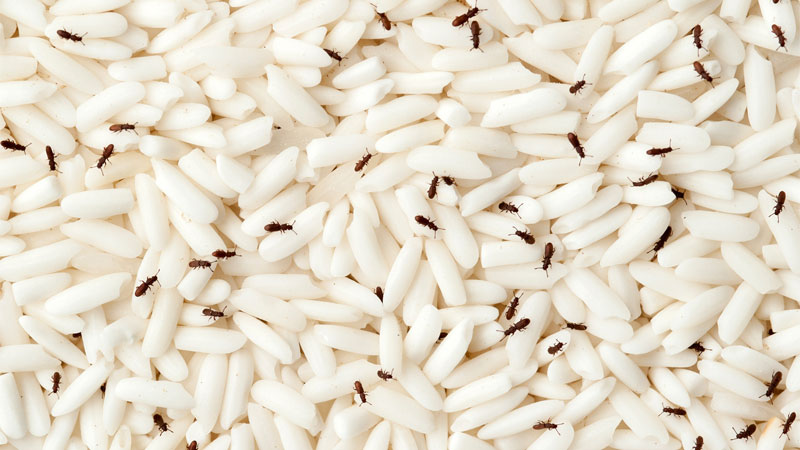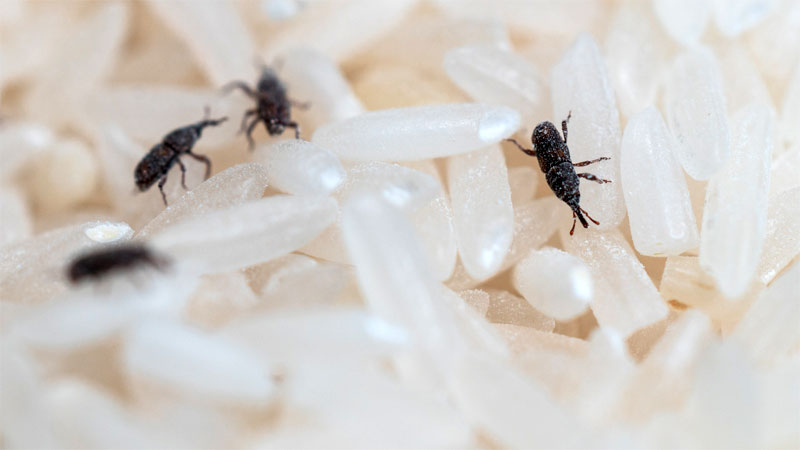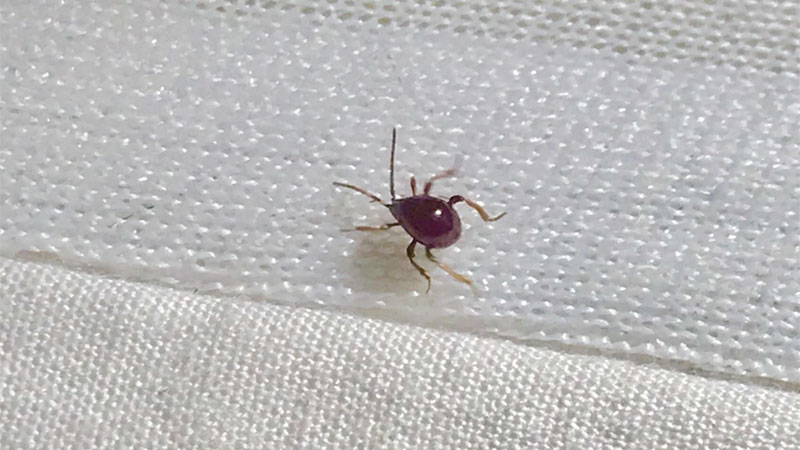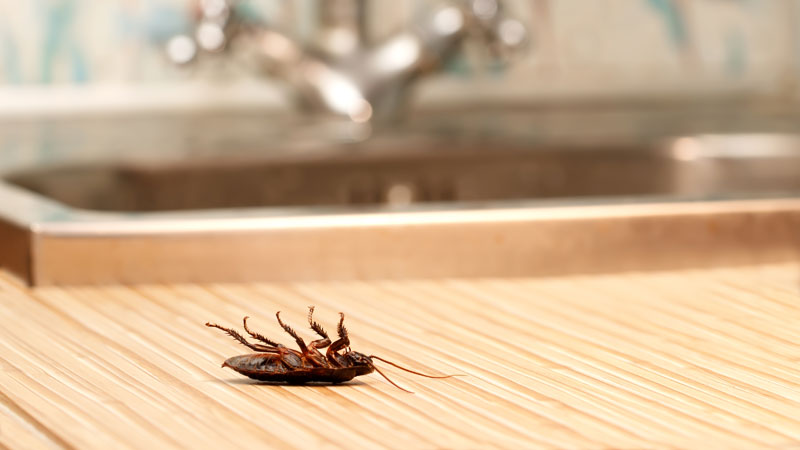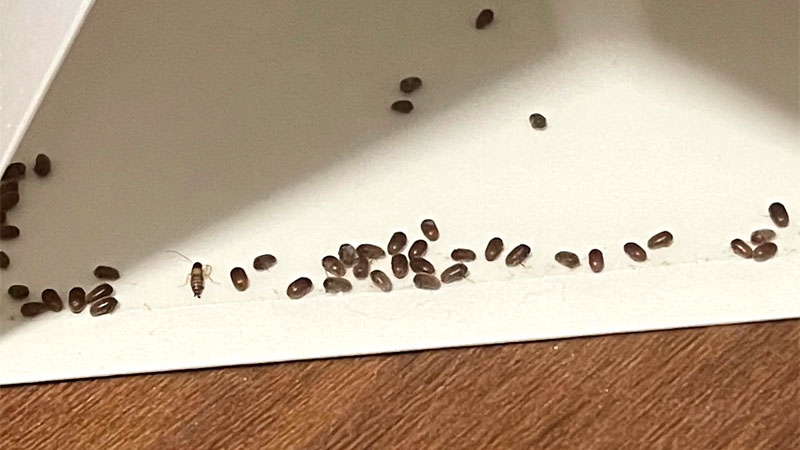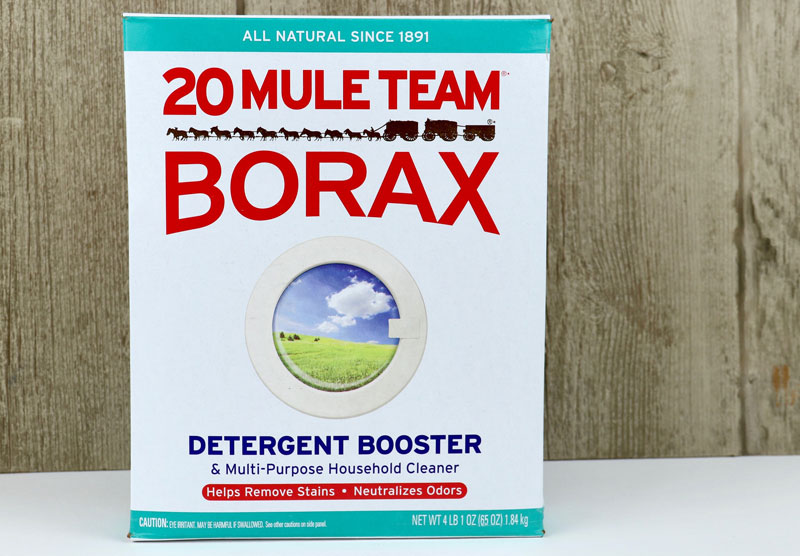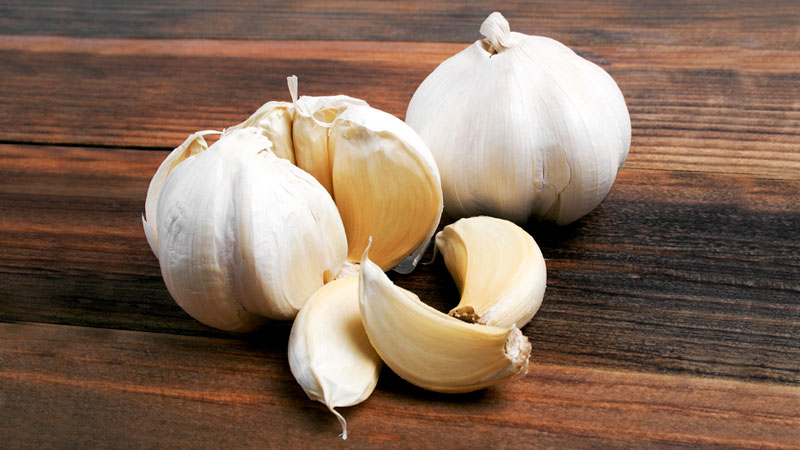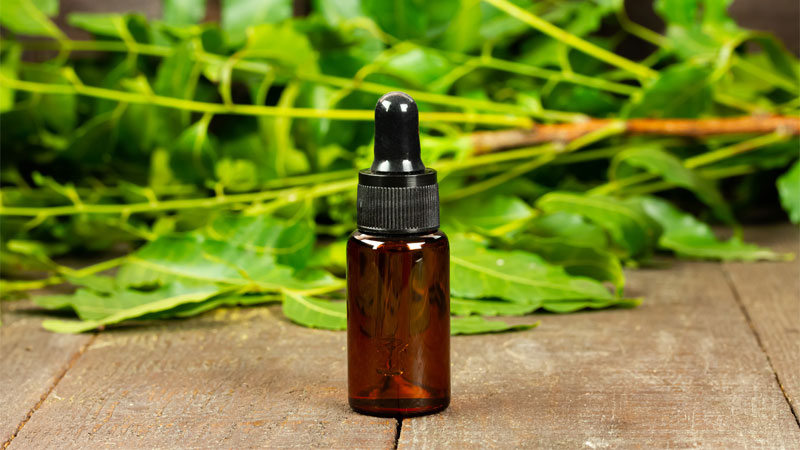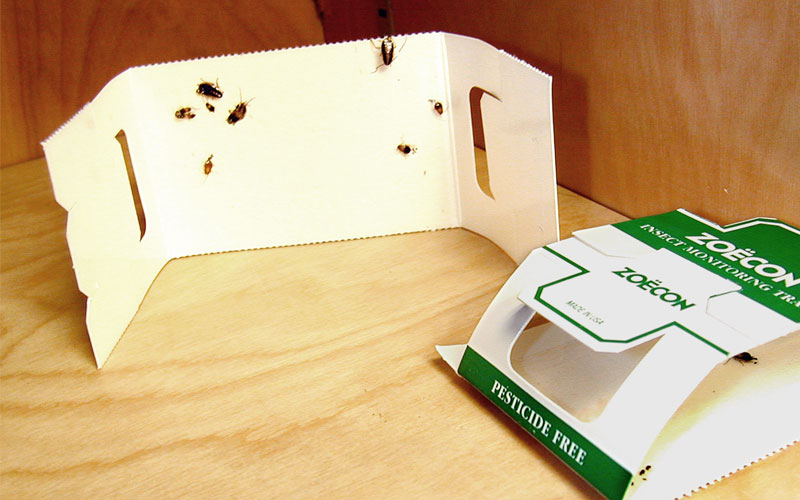Have you ever noticed tiny black critters in kitchen and wondered what they were? Perhaps they were the size of poppy or sesame seeds, or maybe they’re a little bit bigger.
Tiny black bugs are a common pest problem in many homes, especially in kitchens due to the easy food availability. Some of these bugs can be harmful as they carry various diseases and bacteria, thus contaminating the food and making anyone sick who consumes it.
That’s why it’s important to deal with these buggers before they cause an infestation and become impossible to eliminate. If you are someone who is often troubled by tiny black bugs in the kitchen then we have some possible solutions for you.
- Ortho Home Defense Insect Killer for Indoor & Perimeter2 is a bug killer spray...
- Provides a long-lasting bug barrier of up to 12 month protection (against ants,...
- Apply this pesticide anytime as a preventative treatment or after you see...
Various Tiny Bugs That Can Be Found in The Kitchen
There is a wide range of little bugs that can invade your kitchen. Knowing what you’re dealing with can go a long way towards eliminating them. Here are just a few you might encounter.
See Also: Common Pests Found in Your Home (Room by Room)
#1 – Beetles
You can determine a beetle from its wings and elytra. Beetles are distinct from other winged insects as the elytra are shell-like forewings that have become thick and hard due to evolution. In fact, many of the bugs on this list are actually types of beetle.
Many species can be found wandering into your kitchen scavenging for food, making them perhaps the most common kitchen invader after ants and fruit flies. Therefore you need to be careful to ensure no food particles around to attract them.
#2 – Weevils
Weevils are a common pest in many kitchens. These tiny beetles can actually be found throughout the house, but they tend to congregate in areas where they have easy access to food sources. The rice weevil (Sitophilus oryzae) and greater rice weevil AKA maize weevil (Sitophilus zeamais) are so closely related they can interbreed.
Up close, they are usually red-brown in color but may also appear black.
Most people think that cereal is the only food that contains weevils but they are also found in flour, crackers and breads. Weevils come into homes through infested human or pet food products.
#3 – Spider Beetle
A spider beetle has 6 legs bug a body shape that makes it easy to mistake them for spiders. Even worse, their long antennae look a lot like an extra pair of legs.
This insect survives on the grains, hence, they can commonly be found in the kitchen where they may contaminate food. Because of their resemblance to spiders, a lot of people accidentally squish first and try to identify later.
#4 – Indian Meal Moth
An Indianmeal moth (Plodia interpunctella) is a common household pest that happily feeds on the food in your kitchen cabinets. The adults may flutter away, but it’s their caterpillars (baby moths) that will infest and contaminate food packets or containers.
One annoying aspect of these critters is that the caterpillars can actually chew through plastic, meaning even airtight containers are vulnerable.
#5 – Roaches
When you think of cockroaches, you probably picture the Big Three: American cockroach (Periplaneta americana), German cockroach (Blattella germanica), and Oriental cockroach (Blatta orientalis).
However, many roach species are much smaller, and the roach family (order Blattodea) even includes termites. Cockroaches carry various diseases that can easily contaminate your food and kitchen counters.
While termites generally remain in the walls and pose more of a threat to your kitchen cupboards than what’s in them, other roaches are a different matter. They tend to only come out at night, scurrying across the kitchen floor in search of food.
In some cases, cockroaches can actually be found in a dishwasher, fridge, or microwave. But if you keep the insides of these appliances clean, you’ll likely never see a roach or other critter there.
#6 – Flies
Flies are one of the most common kitchen pests out there. But not all of them are as big as a house fly. Fruit flies can appear seemingly out of nowhere, chasing after every scrap of food you lay out.
Drain flies normally help in cleaning up sewage, but sometimes they will crawl up your pipes and may appear in your kitchen sink drains. Gnats are a tiny type of fly that can attack your plants, including kitchen herbs.
All of these different types of flies feast on food waste and are attracted to sweet or rotting smells. Because of their ability to contaminate food, it’s important to get rid of them quickly.
#7 – Ants
No list of common kitchen bugs would be complete without ants. These tiny insects are often black, but can come in red, brown, or yellow hues as well. Grease ants, sometimes called thief ants, are particularly attracted to oily or greasy food residue.
Other common kitchen ants include Argentine ants, ghost ants, and pharaoh ants.
#8 – Drugstore Beetles
While technically brown, drugstore beetles are small enough they can often be mistaken for black. The adult beetles are known by many names, but it’s the larvae that are a problem.
Drugstore beetles tend to infest human foods at food processing facilities. By the time the packaged foods reach your kitchen pantry, the eggs have hatched and the larvae are getting fat on your food.
Methods to Get Rid of Tiny Black Bugs in Kitchen
Of course, simply spotting a bug in the kitchen doesn’t get rid of it. The following are some tips to not only get rid of these little black pests but also keep them away.
#1 – Cleanliness
The first and foremost thing required to get rid of any bugs present in the kitchen is cleanliness. Regularly clean your kitchen, pantry, and areas around them, making sure to get rid of any food crumbs or residue.
Also, be sure not to store food openly in the kitchen as there are higher chances of the bugs eating and contaminating them. Regardless of the type of bug, this simple step can make a huge difference.
#2 – Borax
This is one of the best methods to get rid of pests using common household products. With ants, you want to mix in either sugar (for sugar ants) or protein bait (for grease ants). You can sprinkle borax on the infected areas to eliminate them effectively.
However, proper care needs to be taken to ensure that borax isn’t sprinkled anywhere around your food as ingesting borax can lead to several health issues, especially in children and pets. Instead, try to place it behind appliances and in other spots small hands (or paws) can’t reach.
- Add to laundry to help remove tough stains, deodorize and freshen
- Wipe on counters and appliances to remove grease and grime and make dishes...
- Removes soap scum, hard water deposits, and dirt
See Also: How to Use Borax to Get Rid of Ants and Roaches
#3 – Baking Soda
This method is one of the safest ways which can be used to get rid of the tiny black bugs present in your kitchen. You can sprinkle this powder on the infected areas to poison the bugs. When ingested, it will react to their stomach acids in the same way as white vinegar, causing their digestive systems to rupture.
While baking soda won’t hurt kids, you should still avoid sprinkling it where children and pets have access in case any bugs have contaminated it.
#4 – Garlic
Garlic is readily available and is surprisingly effective. Its smell is an excellent repellent to get rid of far more than relatives.
You can place cloves of garlic in cupboard or other places to deter pests. Alternatively, you can steep it in hot water overnight and use it as a repellent spray.
#5 – Peppermint Oil
Peppermint oil can also be used to get rid of all sorts of bugs in the kitchen. You can easily prepare this oil at your home or purchase it locally or online. Use it on its own or with lemongrass, eucalyptus, rosemary, or tea tree oils for custom smells you’ll love but pests will hate.
Sprinkle a few drops where you’ve seen bugs on kitchen countertops or in cupboards. Alternatively, you can add it to slightly soapy water to make a spray that is able to stick to surfaces after the water evaporates. Just be warned that these oils can be toxic to pets if ingested.
- Our 100% Pure Oil Peppermint is Extra Premium Grade and perfect for...
- Use in a diffuser, oil burner or for massaging, add to body wash or shampoo, add...
- Peppermint oil is a cooling, minty and refreshing oil
#6 – Neem Oil
This oil, which is extracted from parts of the neem tree, is one of the best and safest methods of pest control. While normally used as a foliar spray or soil soak for your plants, you can also spray it on surfaces to kill pests.
Neem oil is perfectly safe (unless you plan on guzzling it) around humans and pets, with the exception of aquatic critters. It has different effects on insects and arachnids depending on whether it has been ingested or they’re sprayed with it. However, these effects are still deadly and can kill hundreds of different bugs.
- 🌿【The PUREST Neem Oil on the Market!】- Plantonix Neem Bliss is freshly...
- 🌸【Super Concentrated Neem Oil】- Unlike other brands, our neem oil spray...
- 🌱【Organic Neem Seed Oil】- Neem Bliss is listed by the Organic Materials...
#7 – Insect Traps
You can also employ some insect traps to kill those pesky bugs. However, unless you’re using sticky traps, it’s important to identify the type of critter and purchase a trap designed to kill them. Try placing the traps where you see the most activity, but don’t place them where children and pets can get to them.
- KILLS: Kills flies, moths, cockroaches, silverfish, spiders and other insects as...
- HANGING STRIP: Just hang up in garages, sheds, storage units, attics and crawl...
- CONTROLLED-RELEASE TECHNOLOGY: Simply remove from package to begin controlling...
#8 – Diatomaceous Earth
Diatomaceous earth (or DE for short) is a powerful tool against all sorts of bugs and even some bigger critters. This fine powder is actually the crushed fossil remains of diatoms. To a bug, it’s like walking on broken glass. The sharp edges lacerate the bug, causing it to die of fluid loss.
While food grade diatomaceous earth is technically non-toxic to humans and pests, it’s best to avoid breathing it in or ingesting it.
- Say Goodbye to Bugs – Kills a variety crawling insects including roaches,...
- Attracts and Kills – Made from diatomaceous earth and selected baits, this...
- Mechanical Killer – Unlike many traditional chemical insecticides, insects...
#9 – Bay Leaves
Bay leaves aren’t just great for making soup, they’re also a wonderful insect repellent. Just like the essential oils we mentioned earlier, bay leaves have a strong scent that bugs tend to hate. Simply stick a bay leaf or two in places you’ve seen bugs and let them work their magic.
#10 – Look for Leaks
While most of the remedies we’ve mentioned involve use of a repellent or killer, addressing the issue of leaks is also necessary. Of course, water leakages should be taken care of to keep your water bill down. But these leaks also create moisture sources that will attract bugs (and the bugs that hunt them).
But there are two other kinds of leaks you’ll want to watch out for. A well-built home should serve as its own air-tight container, keeping bugs and the elements outdoors and your heating and cooling bills low. When you open your windows, make sure the screens are in good shape.
Also, check for any potential access points and seal them (you can use screens or exclusionary devices on vents or caulk around windows and doors, for example). These steps will keep bugs from getting into your house unless they manage to sneak in with you.
#11 – Pesticides
Insecticides (or arachnicides for eight-legged pests) are effective, they’re also toxic. Use these when you need to hit the pests hard and fast. Just be sure not to use it near any open food and keep kids and pets away. Also, remember to clean any surfaces afterwards to get rid of the residue these pesticides leave behind.
The Ultimate Remedy: Pest Control
While the remedies we’ve mentioned can often clear up an infestation, there are times when your mileage may vary. This is especially true with pesticides, which can create superbugs if used too often. This is when hiring a pest control professional becomes necessary.
An exterminator can help you eliminate these black bugs more efficiently and effectively while still being mindful of your time, money and resources. In fact, the cost for many pests is cheaper than you might think. Even more important, a good pest control company will perform followup visits to help ensure the pests don’t return.
Final Words
Nobody likes black bugs in their kitchen. They are filthy, problematic, and can contaminate your food. Thankfully, there are ways to get rid of these pests and keep them away.
Simple things such as keeping your kitchen and home clean will go a long way towards keeping bugs away, and you probably have items around the house that can be effective repellents. However, don’t be afraid to call for professional help if there’s a risk that things might get out of hand.
- How to Identify Skunk Poop (With Pictures) - April 1, 2024
- You Really Don’t Need That Opossum Trap - January 4, 2024
- How to Set a Mouse Trap Without Getting Hurt - December 28, 2023

